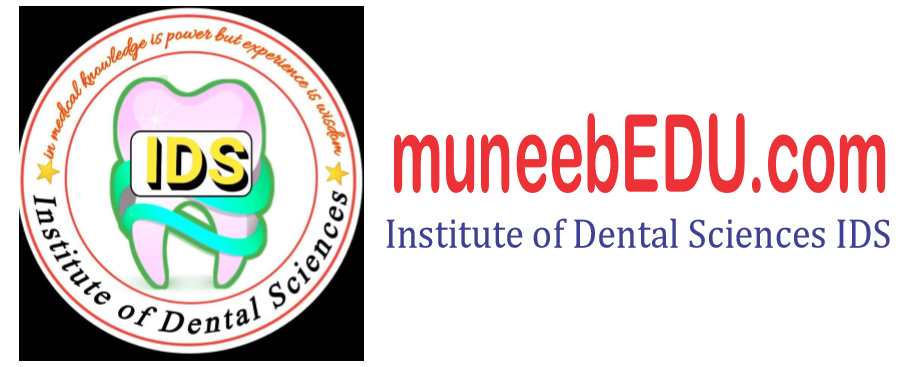BSDT_2021-2025
Name:_________________________________ Roll# __________ Paper: Antibiotics .
Term:__ Annual /
Mid____ Date____/______/______ Total Time: ___________ Total Marks: ______________
______________________________________________________________________________________________
These MCQS are prepared by ( Muneeb Ali Hassan ).
|
Q1:
Substance that destroys or inhibits the
growth of other pathogenic microorganisms and is used in the treatment of
external or internal infections. |
||||||||
|
a) |
Antifungal |
b) |
Antiviral |
c) |
Antibiotics |
d) |
Both b & c |
|
|
Q2:
Antibiotics are classified on the basis of ? |
||||||||
|
a) |
mechanism of
action |
b) |
spectrum of
activity |
c) |
mode of action |
d) |
All
of these |
|
|
Q3:
Penicillins, Cephalosporins, Vancomycin,
these are Synthesis inhibitors of ? |
||||||||
|
a) |
Beta-lactamase |
b) |
Mycolic Acid |
c) |
Protein Synthesis |
d) |
Cell Wall |
|
|
Q4: Polymycin and Bacitracin are the
_____________ Inhibitors |
||||||||
|
a) |
Beta-lactamase |
b) |
Inhibit 50s
Subunit |
c) |
RNA synthesis |
d) |
Both a & b |
|
|
Q5:
Aminoglycosides (gentamycin) & Tetracyclines are the Protein Synthesis
inhibitors and included in ? |
||||||||
|
a) |
Inhibit 10s
Subunits |
b) |
Inhibit 50s
Subunits |
c) |
Inhibit 40s
Subunits |
d) |
Inhibit 30s
Subunit |
|
|
Q6:
Macrolides, Chloramphenicol, Clindamycin & Streptogramins are includes in
? |
||||||||
|
a) |
Inhibit
50s Subunits |
b) |
Inhibit 10s
Subunits |
c) |
Inhibit 40s
Subunits |
d) |
Inhibit 30s Subunit |
|
|
Q7:
DNA Synthesis Inhibitors drugs
includes ? |
||||||||
|
a) |
Streptogramins |
b) |
Isoniazid |
c) |
Rifampin |
d) |
Fluoroquinolones
(ciprofloxacillin) & Metronidazole |
|
|
Q8: Rifampin is ________ synthesis Inhibitor ? |
||||||||
|
a) |
DNA |
b) |
RNA |
c) |
Folic Acid |
d) |
Beta lactamase |
|
|
Q9: Isoniazid is an acid synthesis Inhibitor. What
is the name of that acid ? |
||||||||
|
a) |
Mycolic Acid |
b) |
Folic Acid |
c) |
DNA |
d) |
All of These |
|
|
Q10:
These drugs are included in which group. (Sulfonamides & Trimethoprim)? |
||||||||
|
a) |
Protein Synthesis Inhibitors |
b) |
Cell Wall
Synthesis Inhibitors |
c) |
Short spectrum antibiotics |
d) |
Folic Acid synthesis inhibitors |
|
|
Q11:
Tetracycline & Chlorampenicol are which type of spectrum antibiotics? |
||||||||
|
a) |
Broad Spectrum |
b) |
Narrow Spectrum |
c) |
Bacteriocidal antibiotics |
d) |
Bacteriostatic antibiotics |
|
|
Q12:
Penicillin-G, vancomycin & Fluxacillin are antibiotics ? |
||||||||
|
a) |
Broad Spectrum |
b) |
Short spectrum |
c) |
Bacteriocidal |
d) |
Inhibit 30s Subunit |
|
|
Q13:
which relation is correct about Bacteriostatic antibiotics ? |
||||||||
|
a) |
Chlorampenicol & Lincomycin |
b) |
Cephalosporin & Erythromycin |
c) |
Bacitracin & Chlorampenicol |
d) |
Erythromycin & Aminoglycosides |
|
|
Q14:
which relation is correct about Bacteriocidal antibiotics ? |
||||||||
|
a) |
Aminoglycosides
& Cotrimoxazole |
b) |
Chlorampenicol
& Erythromycin |
c) |
Chlorampenicol & Aminoglycosides |
d) |
Fluxacillin & Penicillin |
|
|
Q15:
Siberian Ulcer & Scarlet Fever are the indications of ? |
||||||||
|
a) |
Antifungal |
b) |
Antibiotics |
c) |
Antiviral |
d) |
All of these |
|
|
Q16:
It is a contributing factor to the
creation of multidrug-resistant bacteria, informally called "super
bugs". It occurs due to the ? |
||||||||
|
a) |
Misuse
of Antibiotics |
b) |
Misuse of
Antifungal drugs |
c) |
Proper use of
Antibacterial drugs |
d) |
Both a & c |
|
|
Q17:
If the concentration of drug requires
to inhibit or kill the microorganism is greater than normal use then the
microorganism is considered to be ______ to the drug. |
||||||||
|
a) |
Resilient |
b) |
Retentive |
c) |
resistant |
d) |
Both a & c |
|
|
Q18:
What is cross resistance ? |
||||||||
|
a) |
Resistance
to other Antibiotics |
b) |
Resistance to other Antifungals |
c) |
Resistance to other Antivirals |
d) |
Resistance to other Anti-inflammatory |
|
|
Q19:
both colistin and polymyxin B or to both clindamycin and lincomycin can cause? |
||||||||
|
a) |
Cross resistance |
b) |
Antibiotics resistance |
c) |
Antifungal Resistance |
d) |
Both a & b |
|
|
Q20: In an analysis of prescribing practices in
teaching hospitals worldwide, more than ______ of all antimicrobials
prescribed were considered inappropriate. |
||||||||
|
a) |
40% |
b) |
48% |
c) |
25% |
d) |
42% |
|
|
Q21:
Bloating and indigestion, Itchy skin
rash, life-threatening allergic reaction are the common side effects of ? |
||||||||
|
a) |
Antibiotics |
b) |
Cross resistance |
c) |
Vector Borne |
d) |
None |
|
…………………………………………………………………………………………………………
1. ⓐ ⓑ ⓒ ⓓ
2. ⓐ ⓑ ⓒ ⓓ
3. ⓐ ⓑ ⓒ ⓓ
4. ⓐ ⓑ ⓒ ⓓ
5. ⓐ ⓑ ⓒ ⓓ
6. ⓐ ⓑ ⓒ ⓓ
7. ⓐ ⓑ ⓒ ⓓ
8. ⓐ ⓑ ⓒ ⓓ
9. ⓐ ⓑ ⓒ ⓓ
10. ⓐ ⓑ ⓒ ⓓ
11. ⓐ ⓑ ⓒ ⓓ
12.
ⓐ ⓑ ⓒ ⓓ
13.
ⓐ ⓑ ⓒ ⓓ
14.
ⓐ ⓑ ⓒ ⓓ
15.
ⓐ ⓑ ⓒ ⓓ
16.
ⓐ ⓑ ⓒ ⓓ
17.
ⓐ ⓑ ⓒ ⓓ
18.
ⓐ ⓑ ⓒ ⓓ
19.
ⓐ ⓑ ⓒ ⓓ
20.
ⓐ ⓑ ⓒ ⓓ
21.
ⓐ ⓑ ⓒ ⓓ
22.
ⓐ ⓑ ⓒ ⓓ








0 Comments